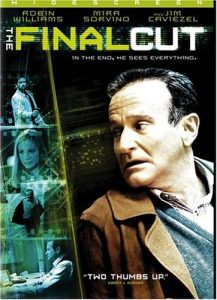Why Your Protagonist Should Have a Past “Wound”
Last week I introduce the idea that writers need to know some important things about their protagonist before starting to write their scenes. Some writers hardly develop their characters at all, and it shows. Their scenes are populated with stereotypes that have no depth or uniqueness.
Conversely, spending hours or weeks penning long descriptions of characters’ physical attributes, food preferences, or general likes and dislikes won’t ensure memorable characters will result.
The first thing—which we looked at in last week’s post—that’s essential to consider about your protagonist is his motivation. And this attribute, like all the others we’re going to look at in this series of posts, points to your premise. And that premise centers on the protagonist’s goal.
So, if everything you consider about your characters orbits around the premise and the goal, you’ll be on your way to crafting great characters.
Think about it. If your premise is about a man whose daughter is kidnapped and he has to go rescue her, you want to create the kind of character who would do this. Think about the movie Taken. The writers of this screenplay, in coming up with characters for a high-action thriller, made the father, Bryan (played by Liam Neeson), be an ex-CIA agent.
This story wouldn’t work if Bryan was a meek, non-physical, confrontation-hating CPA like Rick Moranis in Ghostbusters. Well, maybe it would have worked with that kind of character, but I picture that more a comedy than a serious suspense movie.
So, for the best fit, Bryan is a trained agent. He has contacts in France, where his daughter, Kim, is kidnapped. He has all the “chops” needed, including the right personality profile, to take on those kidnappers. His expertise is essential for believability.
A whole lot of novels I edit and critique have protagonists doing things they would never be able to do. Ordinary, untrained characters save the world, solve impossible crimes, and take on dangerous enemies without having any background that would equip them to do so.
This is why it makes sense to start with a strong concept and premise, then build your characters on that foundation.
Bryan, our desperate father, is highly motivated, right? He loves his daughter. And having believable, strong motivation for your protagonist is the primary consideration.
But let’s also look at another key element you’ll want to work on when crafting your protagonist. And that’s the “wound.”
While not all protagonists need a wound, those that have them are richer characters, and I think that goes without saying (though I said it).
What’s a wound? It’s something that happened in the past that hurt. We all have wounds. Some are minor; some are devastating and take a lifetime to heal.
Every novel I write, I work on the wounds. I often start with the wounds. Why is this so helpful in character development?
Because this also ties in with motivation and core need.
 Bryan, in Taken, has a wound, and it’s brought out early on in the movie. And it’s at the heart of his motivation. Sure, he loves his daughter—as would any good father—and he’s super qualified to go after the bad guys because of his CIA background. And that would have been enough to craft a great script.
Bryan, in Taken, has a wound, and it’s brought out early on in the movie. And it’s at the heart of his motivation. Sure, he loves his daughter—as would any good father—and he’s super qualified to go after the bad guys because of his CIA background. And that would have been enough to craft a great script.
But the writers (smart) took Neeson’s character a giant step further. They had him suffer a bitter divorce—his wife dumped him for a rich guy who could give his own precious daughter all those expensive things he couldn’t. And he quit the CIA in order to move closer to his daughter, who now hardly gives him the time of day. Ouch. He’s in a world of pain.
So when his teenage daughter tells him she’s going to France with a girlfriend, and he learns they are unchaperoned, he freaks. He knows how dangerous that is. And of course, once she is taken, he goes ballistic. There is so much more here, now, regarding his motivation and character arc.
No, he doesn’t go after the kidnappers to win his daughter’s love back or punish his ex-wife for being cruel to him or foolish for letting Kim go on that trip. But those relational tensions and dynamics add richness to the story and fashion a character arc that has depth.
At the end, when he’s brought her home, his core need (to win back his daughter’s love and affection) is satisfied. That’s what he wanted more than anything, and that was intrinsic to his motivation.
Come Up with a Wound
Think about your protagonist. Have you thought of a past hurt or pain that could serve the needs of your premise? You don’t want to come up with just any ol’ wound.
How does it help your survival story to have Bob get dumped by a girl in the fifth grade? If Bob has to push through horrible conditions to make it back to his car alive, wouldn’t it make more sense to give him some wound in his past that involved humiliation over quitting? What if Bob had wanted to make Eagle Scout, but his pals made fun of how weak and useless he was? Maybe he got lost on the campout and they all laughed at him, and then his father told him was a failure he was and how he’d never amount to anything.
All the hurt builds up and forms who were are and how we see ourselves.
I’m planning on writing a paranormal thriller after I finish my current (#6) historical Western. I came up with the premise for Lightning Man when an image popped into my head of a man who’d been struck by lightning a dozen times standing on the top of a mountain in a storm, arms outstretched, sacrificing himself to save others by channeling lightning. I imagined a park ranger luring a terrorist out into the open, knowing that the only way to stop his nemesis would be to die as they both got struck by lightning.
From that I developed a full plot, but not until I brought this character to life. First: his motivation. I worked on crafting a man who loves the outdoors, who stands up for justice and hates evil and all those qualities needed of a person who would risk his life to stop a criminal.
But I had to go further. How could I get him to that big climactic moment of sacrifice? By making him need redemption. It wouldn’t be enough to just make him a “good guy” that is willing to die to save others. While there are people like that, in fiction, we want to go deeper.
And so . . . enter the wound. I starting asking a lot of questions about my lightning man. What wound could I give him that would torment him so much that redemption could only be found in the ultimate sacrifice?
 The answer was quick and simple: guilt. Guilt is an awesome motivator. And it makes for great inner conflict. I’m thinking of the movie The Final Cut, starring Robin Williams. Here’s a great example of a strong premise that involves a character with a past wound.
The answer was quick and simple: guilt. Guilt is an awesome motivator. And it makes for great inner conflict. I’m thinking of the movie The Final Cut, starring Robin Williams. Here’s a great example of a strong premise that involves a character with a past wound.
In this futuristic film, Alan is a “cutter.” [WARNING: SPOILER] He edits the recordings of people’s lives after they die—recordings made in a person’s head that documents their every action by means of a “Zoe” chip. At the heart of this story is the traumatic event that haunts Alan from his childhood—his friend fell off a plank and died, and Alan abandoned him. At least that’s what he recalls. But when he stumbles upon a recording in a dead person’s memory, he learns the boy hadn’t died, and the blood he saw was merely paint.
The guilt Alan carries is a big motivator, and it’s formed who he is and why he does what he does.
In my story, I came up with the perfect past wound. I give my lightning man the burden of guilt over his younger brother’s death. One afternoon, they’re on a lake in a metal rowboat, and despite his father’s warning, they go out fishing and lightning strikes (for the first time). My protagonist accidentally flips over the boat, and his brother drowns.
As a result his parents blame him, something they have never forgiven him for, and of course, he’s never been able to redeem himself.
To me, that’s a powerful wound that will seep into every scene in my novel. It impacts his friendships, his romances, and his behavior. He takes high risks and jumps into danger because of his guilt and need for redemption.
 Minority Report is another terrific example of a great story that has a wound at the heart of the premise. The protagonist, John, suffers guilt over his young son’s kidnapping. That one incident not only destroyed his marriage but haunts him every second, a debilitating wound that makes him medicate himself and bury himself in work.
Minority Report is another terrific example of a great story that has a wound at the heart of the premise. The protagonist, John, suffers guilt over his young son’s kidnapping. That one incident not only destroyed his marriage but haunts him every second, a debilitating wound that makes him medicate himself and bury himself in work.
The writers of this screenplay (I’m not sure how closely the movie aligns with the short story by Philip K. Dick) made this wound a huge component of the plot, and it creates a great character with great motivation that generates a lot of empathy.
So, have you come up with a wound for your protagonist? If not, think about it. Be sure the wound serves the needs of your premise.
In addition to giving your character strong, believable motivation and a wound that gives him depth and inner conflict, you also need to come up with a personality type that fits your genre and premise. And we’ll talk about that next week.
Share in the comments some great characters you love in movies or novels that have a strong wound that impacts and informs who they are. Or tell us about your protagonist.












My favorite wounded protagonist is alcoholic lawyer, Frank Galvin, from “The Verdict.” Once framed for jury tampering by his firm because he was onto their corrupt practices, he lost his wife, his job, his house — everything except one pal and his law licence. He becomes the hard-luck underdog in a case that pits him against the formidable Catholic church and a team of high-priced attorneys, a case he needs to win in order to save his career and his soul.
C. S., this is one of the most comprehensive articles I’ve read on “wounds” in like forever! Your examples made one of my toughest challenges in my writing journey a lot clearer.
I’m writing a romance, so both my H/H need to grow and change from their wounds. My hero knows that his “father” is not his father, but his uncle. The brother abandoned his mother after she became pregnant with him, so the uncle married her. I don’t know if the hero suffers too much from this, but makes the promise to himself that if he were ever in that situation he would do the right thing. Of course, this is a “secret baby” trope, and it’s twins! You can probably guess the rest!
Awesome post! I’m really glad I subscribed.
Marcia
So glad this helps, and glad you found my blog! I have some helpful posts about romance structure, as well as a chart you can download for the 20 key romance scenes.
So your 12 Pillars workbook example story is coming to life! I always thought that was too good of a story to pass up writing. Can’t wait to read it.
I’m writing a suspense thriller with 4 major characters working together to stop a nuclear attack–same outward/public goal, but each has a different personal wound that gives them unique strengths, weaknesses, and motivations. My hero, who has always been a loner, has to not only conquer his own wound but help the others deal with their fears to achieve the public goal. Before I started, I was rock-solid on my characters, their backgrounds, wounds, fears, motivations before I started writing which makes the external plotting of the story so much easier. I know what obstacles I need to set up to make them grow, and I know how they will (or won’t) overcome them. I thoroughly agree with the power of a wound to define the motivations of a character.
Great post, CS. The wound is the driving force in any great protagonist.
Great advice! I actually figured this out on my own about two years after I first started writing my original fantasy story in 2014, but I wish I’d seen an article like this before then and it might have saved me some time! My main character started out as a girl I just wanted to be normal. She had a happy life, her parents were together, she had a nice sister, and overall, she was just…boring. Meanwhile some of my secondary characters were way more interesting, and I couldn’t figure out why. Eventually, I realized the interesting characters were the ones with complicated, and often painful pasts. So, I took action and made it so my main character’s father had gone missing one day and then appeared in a field about a year later, dead, with a spear in his chest. All of a sudden,everything changed. My character had new depth and motivation and her personality sprang to life. Even her mother and sister, who have smaller roles, became more interesting. Past wounds truly do a lot to make great characters!
A woman’s mother died when she was a teenager and her father turned to drinking to cope. She feels abandoned, so she needs to be self-sufficient and not rely on others who will eventually leave her.
I mean, I have a biased against Taken because my travel-fearing ex loved it, making the whole set-up of, “I KNEW THIS WAS GOING TO HAPPEN. WHY DIDN’T YOU LISTEN TO MY IRRATIONAL PARANOIA?!” irritate me on a personal level. However, the film is very popular and I think you’re right in that it’s prominently due to the way the plot isn’t just about saving his daughter, but getting some validation that the multiple “wounds” from his past caused. Had there not been a low point for him that people could relate to, I don’t think it would do as well.
Good post!